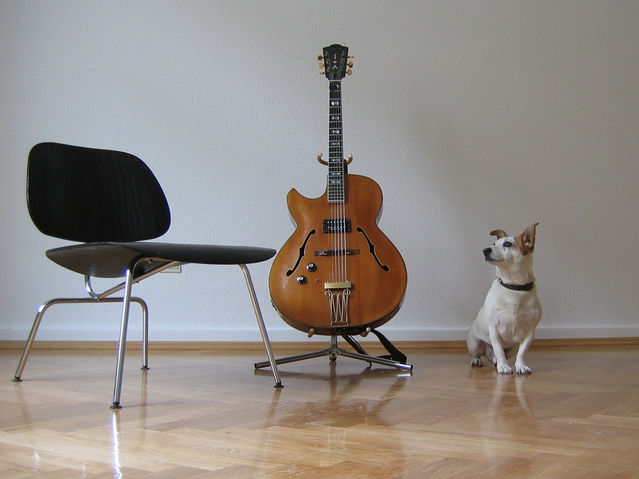Music To Calm The Sheltered Beasts
"If we're in a chaotic environment, we're drawn towards structure and order. So these songs, the lullabies, are very simply structured."
"And then I think not only the babies, but also the animals are drawn to the human compassion in the singer's voice, and the familiarity of the heartbeat."
"I hate to admit this, but I got emails and phone calls for 13 years about how people would play the Heartbeat Lullabies for their dog, and it would calm them and keep them from barking, and I just kind of said: 'Oh, come on. ...I mean, is this really real? Are you people reading things into this'?"
Composer Terry Woodford, Muscle Shoals, Alabama

Now 75, years ago Terry Woodford was tasked with creating lullabies to quiet crying babies, to give them audible comfort that would still their anxieties -- and he responded by writing music based on traditional lullabies with the additional device of adding an underlying heartbeat. The thought behind this was obvious enough; listening to that heartbeat and that soothing music would be familiar to babies from their memory of the heartbeat they heard in the womb, and later while being held by their mother or father.
The music proved a success, doing the work he hoped it would to comfort and to placate the anxiety that babies and infants can feel at hospital nurseries and at newborns' homes. That music was named Heartbeat Lullabies. Serving as a judge at an arts festival in 1984 in Huntsville Alabama, Mr. Woodford was approached by a woman who was a recreational therapist at daycare centres who wanted him to think about creating music "that's not so condescending for our kids". His immediate response? "I don't want to make music for kids!"
And then he thought better of it, viewing it as a challenge. Later on, he began hearing from people claiming that the Heartbreak Lullabies served to soothe their dogs' anxieties. And he could hardly credit it. But he learned that some shelters had started using the music, one of which was in Colorado Springs where he happened to be living at the time. He paid a visit there: "I'm walking down the aisle, and all the dogs are jumping and barking, and (the shelter employee) had an old boombox in the corner. She turned it on, and within 15 seconds every dog laid down in their kennel, and it freaked me out."
 |
| Shutterstock |
This experience inspired him to go on to use the basic music he had designed for babies and to re-work it for dogs. He estimates that the music, renamed Canine Lullabies, is being used in some 2,500 canine shelters. He charges nothing for the CDs or downloads he provides to shelters, to rescues and to animal clinics. His is not the only music source being used to soothe the emotions of shelter dogs. There is iCalm for Dogs, Relax My Dog and Song for Daisy. Song for Daisy is a 15-minute track by singer-songwriter Gnash.
Gnash adopted a Maltese terrier named Daisy. Gnash took the step of consulting researchers of a 2017 study that found shelter dogs responded when exposed to reggae or soft rock, rather than Motown, pop or classical music, and he formulated his Song for Daisy with that information in mind. It was found through a study in 2002 that shelter dogs responded favourably to classical music to encourage quiet and relaxation, and a later 2012 study repeated those findings.
 |
| Source: plenty.r. photo |
"Since being in a dog rescue shelter is often a stressful time for dogs, having music which actually calms and relaxes them could certainly help to make the experience better."
"After all, Music Therapy is a recognized form of treating human beings with anxiety problems, and there is no reason to think that it would not work on dogs as well."
Stanley Coren, PhD, DSc, FRSC, Psychology Today

0 Comments:
Post a Comment
<< Home